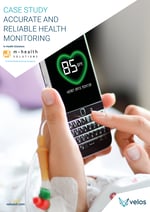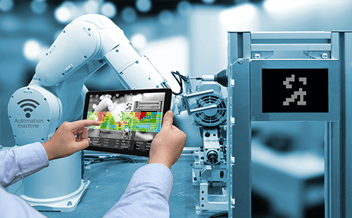

Choosing an IoT partner for Remote Patient Monitoring
Remote patient monitoring (RPM) is considered one of the most sought-after solutions for improving healthcare delivery. However, when it comes to the practical implementation of RPM, there are many questions to be answered, including: Who to trust with actually delivering the IoT part of the solution? Here are several points to consider when choosing your new IoT partner.
What Is Remote Patient Monitoring (RPM)?
In a doctor's office or in the hospital, the most valuable source of data in the building isn't the nurse, doctor, or even the computer system; it's the patients. Nothing can provide you with as much information about a patient's needs as the patient and their body.
The problem with this, however, is that most patients don't live in hospitals or doctors' offices, hooked up to machines constantly, leaving doctors without valuable information every time a patient leaves the office.
Fortunately, thanks to IoT technology, this is quickly changing. IoT tech allows you to easily keep tabs on patients while they're away from the office without intruding on their life. This is known as remote patient monitoring or RPM.
How to Choose An IoT Partner For RPM?
The perfect IoT platform for RPM needs to be extremely reliable, flexible, and secure. Developing such a platform is a very costly and time-consuming endeavour for healthcare providers. However, combining efforts with an IoT solution provider would bring the focus back to providing a great product for the patients.
Here are a few of the most important factors to consider when choosing an IoT partner for remote patient monitoring.
Connectivity
The foundational component of any IoT platform is connectivity. Without connectivity, there is no internet, and without the internet, your Internet of Things is just, well, Things.
There are several connectivity options currently available in the IoT market, and more are becoming available all the time. No connectivity option is necessarily "bad," though some are definitely better suited for certain IoT systems.
Most RPM devices are going to be wearables, so they need to be small and discreet, You then need all of these devices to communicate back and forth with the hospital/office, which is where cellular comes in handy.
Connectivity Management
Connectivity management is the second component of an IoT platform, and it ties right back into the first. IoT systems need large quantities of devices to be connected back to a central point, which requires careful engineering and organisation.
When it comes to keeping a network of devices connected on a global scale, traditional cellular networks are the perfect option. Devices can connect to these networks in one of two ways: steered or non-steered.
Steered SIM cards are programmed to have a preference for a specific network, while non-steered cards will stay connected to whatever network provides the best signal. Non-steered is usually the way to go since it will provide you with the best network conditions possible every time.
For RPM to realise the full device connectivity potential, there are three things needed to reap the benefits of a global-scale service:
- The device connectivity management solutions need to match your requirements.
- SIM management needs to be easy to use and buy.
- Real-time visibility and management of your device connectivity at scale.
Integration
Integration is an essential part of IoT when you're talking about remote patient monitoring. The medical industry is very tech-savvy, relying on a plethora of applications, services, computers, and devices. The right IoT system for RPM should complement a hospital's existing tech, not disrupt or supersede it.
The way that IoT systems primarily integrate through existing tech is through APIs and SDKs. APIs (application program interfaces) are tools that allow different programs to securely work together, encouraging harmony across different applications.
SDKs (software developer kits) are resources that an app developer provides other developers to make it easy to modify and expand upon a program's initial capabilities. SDKs allow software developers to tailor a program to their specific needs, rather than using a one-size-fits-all solution.
The best IoT options will have plenty of SDKs and APIs available, making it easy to mesh an IoT platform with your existing technology.
Security
Security is extremely important to every aspect of the medical industry, and IoT Solutions are no exception. The data that is handled, transferred, and read within the field is almost unanimously sensitive, and it's the responsibility of the medical industry to treat it as such.
IoT Solutions are especially susceptible to security issues since there are so many entry points for malicious activity. Every device, network, and system throughout the platform needs to be as secure as possible.
One of the most vulnerable points of an IoT system is the network. Choosing a network that is as secure as it is reliable is key. The right network will have checks and measures in place at several points throughout the connectivity process that ensure every connected device is legitimate and unaffected.
Dedicated Support
And lastly, your IoT partner should have Plan B, C, and Z in place. At some point or another, your network, devices, or platform as a whole is likely to encounter an error and possibly even go down. When this happens, you need to know that you have a reliable support system in place to handle these situations.
This is especially true when talking about the medical industry, as even the slightest hiccups can have major ramifications. A reliable IoT platform should be as reliable at its best as it is at its worst, and that means having 24-hour support teams, back systems, and a plan for every disaster.

Are you looking for Remote Patient Monitoring IoT solutions?
Read one of Velos IoT's real customer case studies to find out how Velos IoT contributes to your RPM business needs.

Speak to a Velos IoT expert
Related articles


Why Velos IoT is the IoT partner for global robot deployment

How to use actionable insights to optimise Industrial IoT Businesses
Optimisation is becoming an increasingly pressing objective for all businesses, including...